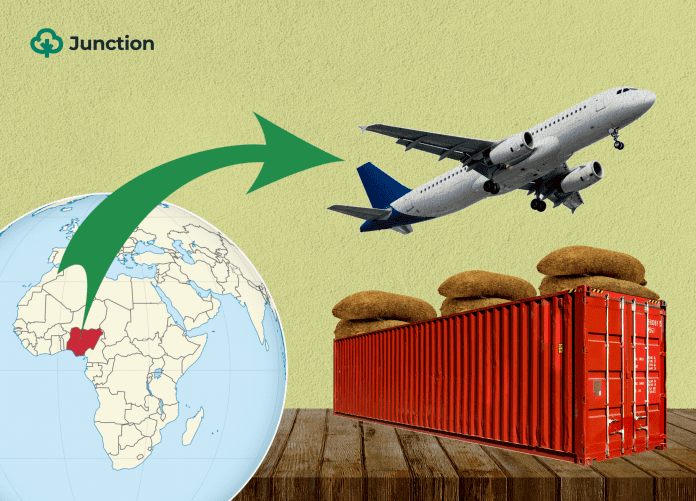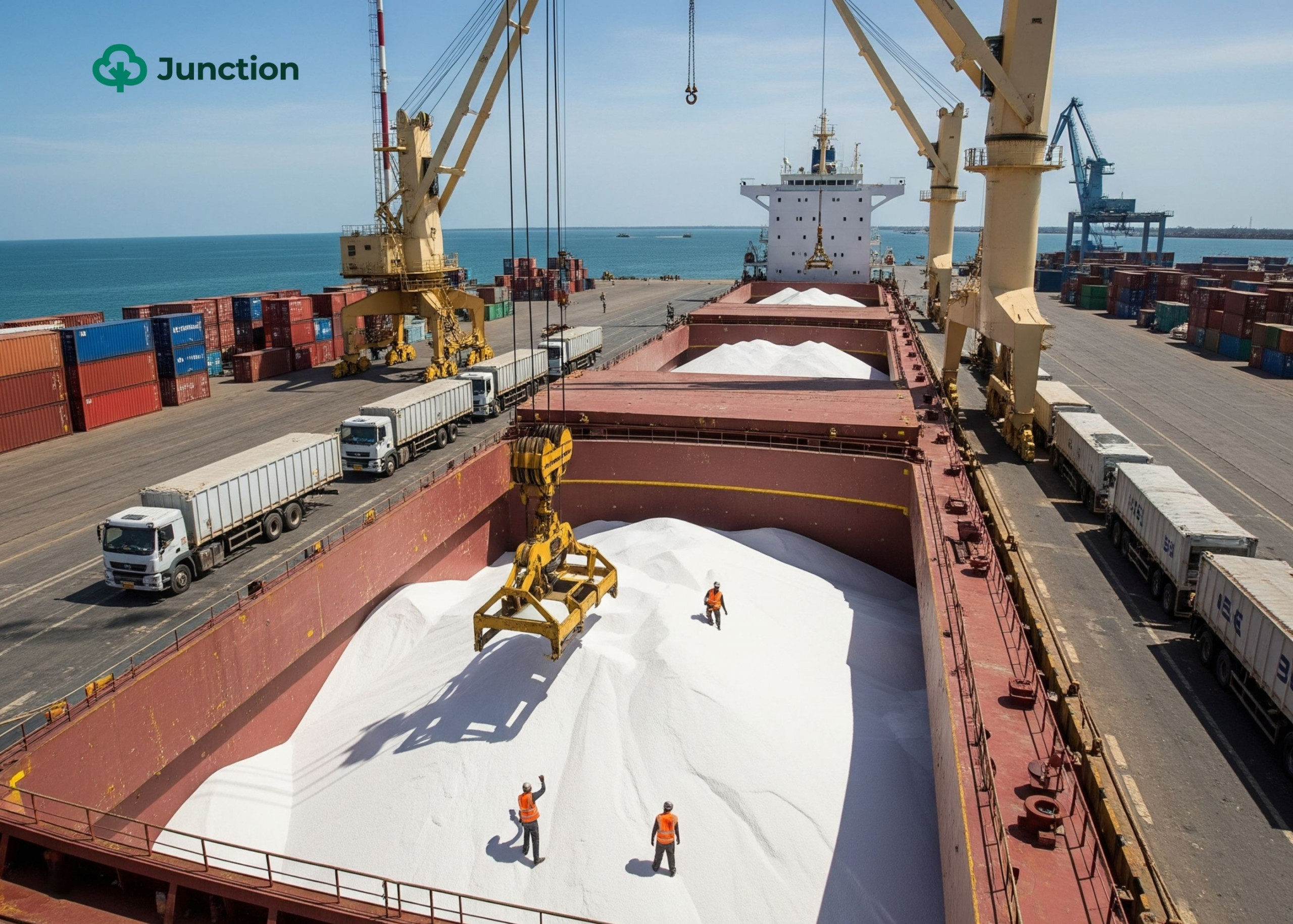Questions answered in this article:
– What are the main challenges hindering Nigeria yam exports despite being the biggest producer of the crop?
– What steps can be taken to position Nigeria on a path to sustainably export yam to the international market?
Nigeriaâs lingering dollar dearth and worsening inflationary pressures have reignited, albeit more aggressively, the discourse around alternative sources of government revenue and foreign exchange earnings. The naira has lost ~40% year-to-date (YTD) at the parallel market, and headline inflation has climbed to 27.3% in October 2023 compared to 21.09% in October 2022 due to higher food and fuel prices.
An option to boost government income and diversify foreign exchange earnings remains the agriculture sector, especially for commodities Nigeria has a strong comparative advantage. One such commodity is yam.Â
Nigeria is the largest producer of fresh yams globally, accounting for about 66% of world output.Â

The global yam market, estimated at $603 billion (2022), is expected to grow by a CAGR of 3.5% annually between 2023-2030 to reach $781.9 billion. Global demand is projected to grow by an average of 3% during the period, especially from Southern America, indicating ripe market potential that Nigeria can tap into.
However, Nigeria barely exports yams primarily due to the obsolete and contentious Export Prohibition Act (EPA) 1989.Â
Though the EPA has its caprices that need to be dealt with quickly so Nigeria can earn additional foreign exchange from exporting its yams, like Ghana, lingering structural issues that impede Nigeriaâs local yam production must be addressed first. Ghana only produces 10% of the world’s yams but is the largest exporter to West Africa (94%) and the world (24%). Between 2021 and 2018, Ghanaâs export earnings from yams rose by 25% to $48.2 million from $38.3 million.Â

The issues facing yam production and exports in Nigeria, including insecurity, poor storage facilities, and high production costs, are peculiar to most agricultural commodities. Solving them will put Nigeria on the path to reviving its agricultural sector, which has seen its contribution to GDP steadily decline from ~40% in the early 2000s to approximately 23% in 2022.Â

In this piece, we will make a case for boosting yam production, touch on the specific issues affecting the yam industry, and recommend ways for the government to boost its yam production, improve the value chain to meet domestic demand, and then venture into exports.Â
A case for boosting yam production: Inflation
Nigeria produces over 44 million tonnes of yams annually but loses almost 50% of this output to spoilage, creating a supply gap of about 20 million tonnes. The supply gap for yams has widened in the last decade by around 20%, wherein imports from China may soon plug. This unfortunate dynamic has increased the price of yams locally by over 50% in the past five years, contributing to the decline in agriculture sector growth and productivity. Â
Meanwhile, the decline in agriculture sector output and productivity has significantly contributed to inflation in Nigeriaânow at an 18-year high. For context, food accounts for approximately 51% of Nigeriaâs inflation basket.Â

Food inflation rose to 31.5% in October from 23.7% in October 2022 on the back of exchange rate pressures (the naira has lost ~40% YTD), higher logistics costs (PMS prices have tripled year-on-year), seasonality and lingering insecurity.
Essentially, the lingering inflationary pressures deepen the need to boost local production of major staples like yams that Nigerians enjoy to curtail rising prices and tame the cost of living crisis. For context, 56% of Nigerian households consume yam every week. Meanwhile, food insecurity risks continue to bloat food availability and affordability issues, triggering an increase in multidimensional poverty to above 70% of the countryâs population.Â
Challenges facing yam production
Having made a case for boosting yam production in Nigeria, it is important to understand the specific issues plaguing the yam industry, as it will guide the recommendations for the government.Â
First, the Export Prohibition Act (1989) bans yams, rice, beans, cassava and maize exports. The aim of the Act was to achieve food self-sufficiency and support local production. While it does sound wholesome, over the years, it has become a big disincentive to investments in producing these food items, especially yams, which are expensive to plant and harvest (weâll speak more about this soon).Â
Although there have been attempts and clamours from different agricultural bodies to repeal the EPA, it has been to no avail, at least ânot completelyâ. The word ânot completelyâ is used loosely here because even with the presence of the EPA, the Federal Ministry of Agriculture and Rural Development unsuccessfully tried exporting yams in 2017 because the yams arrived at the destinations spoiled. In plain terms, investment towards any sector will be lean when there is no incentive to generate substantial revenue. This is what the EPA has done to the yam industry in Nigeria, and more often than not, local demand continues to suffer.
The second issue is the high cost of production for yams. It’s no longer news that smallholder farmers dominate food production in Nigeria, accounting for over 80% of total agricultural output, including yams. This âcult of the smallâ, as the Financial Times puts it, does not produce on a large scale to substantially meet local demand (not to talk of exports) and is often âpoorâ.Â
Farmers’ poverty in Nigeria has birthed several agriculture intervention schemes like the now-ended Anchor Borrowers Programme to support farmers. However, the problem remains. According to this NBS and World Bank survey, yams are one of the most expensive crops to produce in Nigeria, requiring significant labour input during planting and harvest periods the farmers cannot typically afford.Â
More so, yam seeds are expensive and scarce, forcing local farmers to save around 45% of harvested yam tubers for the next planting season, starkly contrasting with other crops, like cassava and millet, where approximately 20% of harvested yields are saved.

The issue of farmer poverty is hydra-headed as it also contributes to post-harvest losses (~50%) for yams as farmers do not have the financial bandwidth to provide appropriate storage facilities. The government is also not helping matters here as providing better storage facilities under key intervention schemes remains underserviced.Â
The third and most significant problem facing yam production is insecurity. Yam is predominantly produced in Northern Nigeria, with states like Taraba, Benue, Nasarrawa, Kaduna, and Abuja leading the way. Other southern states like Oyo and Delta also produce yams. However, with key producing states plagued with insecurity attacks, planting and harvesting yams have reduced as farmers prioritise safety and survival. Insecurity alongside higher diesel and fuel prices spills over into reducing the supply of yams as logistics and distribution costs climb, thus, increasing domestic prices.Â
Essentially, the aforementioned issues, including regulatory bottlenecks stemming from the EPA, lack of proper storage facilities, high production costs, insecurity and inadequate transportation infrastructure, reduce the overall yam yield available for consumption and export.
Recommendations for the government
To address the challenges facing yam production in Nigeria and unlock the full potential of yam exports, the government must take strategic steps to support the industry. Explicitly, before the government can focus on boosting yam exports, it is essential to reiterate that the domestic issues affecting the yam industry must first be addressed. Â
So, leading from the issues we highlighted earlier, the first on the list is to obliterate regulatory hindrances (cue in the EPA) that continue disincentivising investments in yam production. The primary function of the government is to create an enabling environment for private sector investments, catalysizing economic growth and employment. And this process starts with enabling policies.Â
If the EPA is lifted, and businesses see the revenue potential of the yam industry, investments could increase, especially across the value chain. Some value chain work has begun with companies like Leky Mills, a fast-growing yam-based Agro-processor, for local consumption and âpotentialâ exports. Tracy Dabul, the Head of Sales and Partnership at Leky Mills, says the company struggles with high transportation costs (the yams are brought from the North) and a rigid lending market. âIt has become increasingly difficult for us to thrive in this economy with little or no help from financial institutions or the government.
One potent step the government can take to support local businesses like Leky Mills, with high-value add, is to allow access to Special Economic Zones (SEZs) by alleviating the high barriers to entry. With SEZs, and incentives like tax breaks and port proximity, prominent domestic companies involved in huge value add for commodities like yam stand to expand their production capacity, thereby increasing supply and cooling prices. Â
Moreso, government support does not end with policy making. Meaningful spending in infrastructure development is extremely important to aid growth further. A major reason why logistics and distribution costs for agricultural prices have skyrocketed in the past decade is the issue of bad roads. More recently, the fuel subsidy removal and exacerbated this problem. But, road infrastructure aside, proper storage facilities to keep supply buoyant even during planting season and reduce spoilage are paramount to support yam production and supply. One way to do this is by establishing cold storage facilities near yam-producing regions and farms to ensure the delivery of high-quality yams to domestic and international markets.
Nigeria can potentially be a key player in the global market for yam. However, addressing the current challenges in yam production is crucial for unlocking this potential. By investing in infrastructure, research and development, financial inclusion, and market linkages, the Nigerian government can create an enabling environment for sustainable yam production and exports. It is time to transform the challenges into opportunities and position Nigeria as a reliable and competitive supplier of high-quality yams globally.



